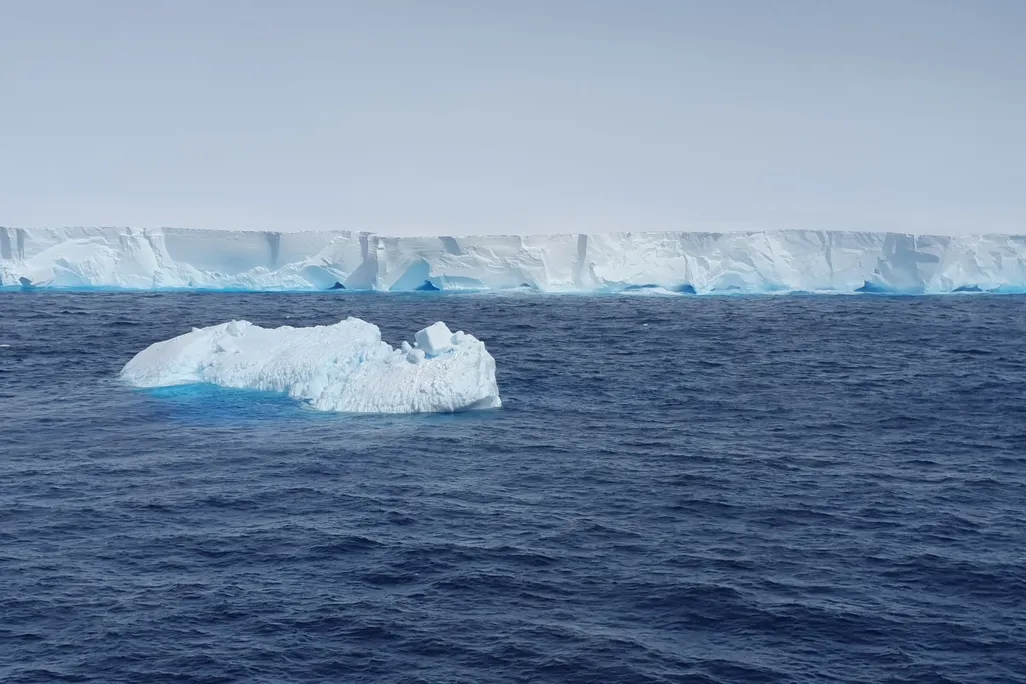The mega iceberg A23a is destined to melt after breaking free from Antarctica in 1986, but this pause in its journey is delaying its fate, experts say

The world’s largest iceberg, which had been drifting north from Antarctica since 2020, has come to a halt. Instead of continuing along its trajectory toward warmer waters, it’s now slowly spinning in an ocean vortex, according to the British Antarctic Survey (BAS).
The iceberg is trapped in a rotating cylinder of water called a Taylor column near the South Orkney Islands, located about 375 miles northeast of the Antarctic Peninsula. Each day, the iceberg, named A23a, rotates about 15 degrees.
It’s unclear exactly how long this pause on the iceberg’s northward journey will last.
“It’s basically just sitting there, spinning around, and it will very slowly melt as long as it stays there,” Alex Brearley, an oceanographer at the British Antarctic Survey, tells the New York Times’ Remy Tumin. “What we don’t know is how quickly it will actually come out of this.”
“It could be a year,” Ted Scambos, a glaciologist at the University of Colorado Boulder, says to the Washington Post’s Daniel Wu. “It could be a couple of years. It might be there for a long time.”
Before it was a Rhode Island-sized iceberg, A23a was part of Antarctica. It broke off the Filchner-Ronne Ice Shelf on the northwestern side of the continent in 1986. When it split, it brought the Soviet research station Druzhnaya 1 with it. The Soviets traveled to the iceberg to collect their equipment from the abandoned base in February 1987.
For 34 years, the iceberg stayed put, grounded in the Weddell Sea off the coast of West Antarctica. In 2020, however, A23a started to move. Last November, it drifted beyond the Weddell Sea into the Southern Ocean—and experts said it was moving three miles each day. The iceberg had likely thinned enough “to lift off the ocean floor and get pushed by ocean currents,” BAS glaciologist Oliver Marsh told Reuters’ Gloria Dickie at the time.
Scientists predicted the Antarctic Circumpolar Current would carry A23a on a path called “iceberg alley” toward the island of South Georgia in the South Atlantic Ocean. But A23a hasn’t reached that destination yet—the South Orkney Islands, where the iceberg now spins, are more than 500 miles southwest of South Georgia.
/https://tf-cmsv2-smithsonianmag-media.s3.amazonaws.com/filer_public/bd/39/bd394eff-6cbc-4c44-9f4f-b4887afa3869/a23a_edge_wasting_april_24_emily_broadwell_british_antarctic_survey.jpeg)